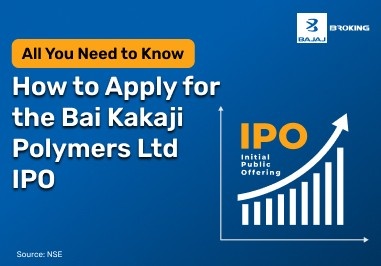You calculate the average of its price for the first five days (from Day 1 to Day 5). How does it become moving? Then, you calculate the average of its prices on the next five days (from Day 2 to Day 6), and so on and so forth. Notice that the exact five days you are considering to calculate the moving average are moving (one five-day period is from Day 1 to Day 5; the next five-day period is from Day 2 to Day 6; the next five-day period is from Day 3 to Day 7; and so on and so forth).
Imagine sailing through the tumultuous waters of the stock market. Just as a ship’s movements can be chaotic due to waves, stock prices experience ups and downs. Here, the Moving Average (MA) acts as a stabilizing force. It is a statistical calculation used to analyze patterns and trends within financial data, such as stock prices. It smooths out the fluctuations in data, enabling you to see trends over time. Essentially, it helps you focus on the general direction of the market amidst its turbulence.
Types of Moving Averages
Moving averages manifest in various variations, each deploying its unique calculation method and interpretation. Here, we acquaint you with the three predominant types:
Simple Moving Average (SMA):
The Simple Moving Average represents the most elementary form of this tool. It computes by averaging a designated number of data points across a specific span. For instance, with a 10-day SMA, you’d sum up the closing prices of the last 10 days and then divide by 10. This process creates a smoother curve on a stock price chart, helping in the identification of trends.
The formula for a simple moving average is given below:
Simple Moving Average = A1+ A2+ A3+ A4+……….. An/n
Let us understand it better with an example. Suppose a trader wants to calculate the SMA of a stock called “X” for the last five days. Let us say that the closing prices of X on the last five days were: ₹100, ₹105, ₹103, ₹107, and ₹105.
First, the trader will have to add these prices, which totals to ₹520. Then, he needs to divide this by the number of observations, which is 5.
Simple Moving Average = 520/5 = ₹104.
Exponential Moving Average (EMA):
The Exponential Moving Average gives more weightage to recent prices, making it more responsive to recent market fluctuations than the simple moving average. While calculating EMA, the rate at which the weights decrease between one price and its preceding price is exponential. It employs a more intricate formula that emphasises the importance of the most recent data points.
Current Exponential Moving Average = (Closing Price x Multiplier) + [EMA (from the previous day) X (1-multiplier)]
Weighted Moving Average (WMA):
The Weighted Moving Average (WMA) assigns more weightage to recent prices. Therefore, it is more responsive to recent market fluctuations. You may wonder how WMA is different from EMA. After all, even EMA assigns more weightage to recent prices than to older prices. While calculating WMA, we reduce the weightage of prices in a linear manner. However, for calculating EMA, we reduce the weightage of prices in an exponential manner. The WMA can be calculated by using the formula provided below:
WMA = [Price1 x n + Price2 x (n – 1) +……… Pricen] / [{n X (n+1)}/2]
Also Read: 30-Day Moving Average
Simple Moving Average vs Exponential Moving Average
The main differences between SMA and EMA are summarised in the table below:
Criteria
| Simple Moving Average (SMA)
| Exponential Moving Average (EMA)
|
Speed of response
| SMA responds slowly to price changes.
| EMA responds much faster to price changes than SMA.
|
Weightage
| SMA assigns equal weightage to prices across all periods.
| EMA provides more weightage to prices of recent periods than to prices of earlier periods.
|
The choice between SMA and EMA depends on your preference for recent data. SMA provides a balanced view of historical data, while EMA responds faster to sudden changes. This is akin to selecting between a steady ship and a nimble vessel when navigating changing conditions.
Importance of the Moving Average Method
So, why use moving averages in trading? Because they provide clarity amidst the chaos. If we look at a chart of a stock’s daily prices, it may move up or down wildly, making it extremely difficult to interpret.
By looking at a chart of daily prices, even seasoned traders may not be able to understand the underlying trend. This is why we need the moving average method. Moving averages smooth out the noise in daily prices, which helps you identify the underlying direction.
When a short-term moving average crosses above a long-term moving average, it may signal that the price is going to move upwards, providing you with a buying opportunity. On the other hand, when a short-term moving average falls below a long-term moving average, it can mean that the price will decline in the foreseeable future. Hence, you can go short on a stock.
Besides, you have several kinds of moving averages to choose from: SMA, EMA, and WMA. If you think that stock prices are showing much higher variability now than earlier and you feel like providing more weightage to recent periods, you can choose EMA or WMA over SMA. Now that you have understood the importance of the moving average method, let us discuss its advantages and disadvantages.
How to Use Moving Averages to Buy Stocks
Now that you have a basic understanding of it, let’s delve into how to trade using moving averages :
- Identify Trends: The primary purposes is to identify trends. When the stock price is consistently above its moving average, it indicates an upward trend, suggesting that it might be a good time to consider buying.
- Crossovers: An additional beneficial method entails the observation of the intersection between two distinct moving averages. When a moving average with a shorter time span surpasses a longer time span, this action could indicate a possible upward trend. Conversely, when the shorter-term moving average crosses beneath the longer-term moving average, it could suggest a forthcoming downtrend.
- Support and Resistance: Moving averages also possess the ability to function as ever-changing points of support and resistance. As a stock price nears a moving average from beneath and rebounds, it potentially signifies a level of support. Conversely, if a stock price encounters difficulty in surpassing a moving average from a higher position, it could be encountering resistance.
- Confirmation: While moving averages are powerful tools, they work best when combined with other indicators or methods. Using them in combination with other techniques can help confirm potential trends and reduce false signals.
Advantages
Moving averages bring a host of benefits to your trading arsenal:
- Simplicity: The calculations are straightforward, making moving averages accessible to traders at all levels of experience.
- Trend Identification: They excel at helping you identify trends, which is fundamental to successful trading.
- Visualization: The smooth line created by moving averages simplifies the process of spotting trends and reversals.
Limitations
However, like any tool, it also has its limitations:
- Lagging Indicator: Moving averages are based on historical data, which means they might not respond quickly to sudden market shifts.
- False Signals: In volatile markets or during consolidation phases, moving averages can generate false signals.
- Over-Reliance: Relying solely on moving averages without considering other factors can lead to misguided decisions.
How Moving Averages are Used in Trading?
Now that you have a basic understanding of it, let’s delve into how to trade using moving averages:
- Identify Trends: The primary purpose is to identify trends. When the stock price is consistently above its moving average, it indicates an upward trend, suggesting that it might be a good time to consider buying.
- Crossovers: An additional beneficial method entails the observation of the intersection between two distinct moving averages. When a moving average with a shorter time span surpasses a moving average with a longer time span, this action could indicate a possible upward trend. Conversely, when the shorter-term moving average crosses beneath the longer-term moving average, it could suggest a forthcoming downtrend.
- Support and Resistance: Moving averages also possess the ability to function as ever-changing points of support and resistance. As a stock price nears a moving average from beneath and rebounds, it potentially signifies a level of support. Conversely, if a stock price encounters difficulty in surpassing a moving average from a higher position, it could be encountering resistance.
- Confirmation: While moving averages are powerful tools, they work best when combined with other indicators or methods. Using them in combination with other techniques can help confirm potential trends and reduce false signals.
Conclusion
In the complex world of trading, the moving average emerges as a guiding light. It brings stability to the volatility of stock price movements, allowing you to focus on overarching trends. By understanding the different types of moving averages – from the simplicity of SMA to the responsiveness of EMA – you equip yourself with a tool that can aid in identifying trends, making timely decisions, and confirming potential opportunities.














